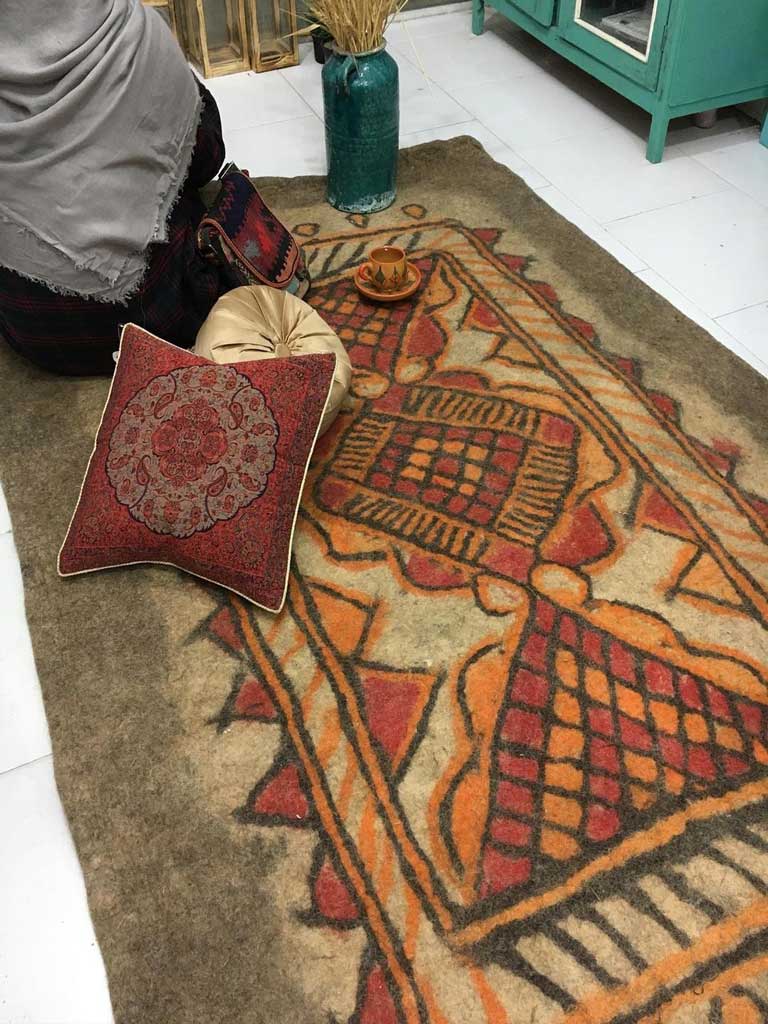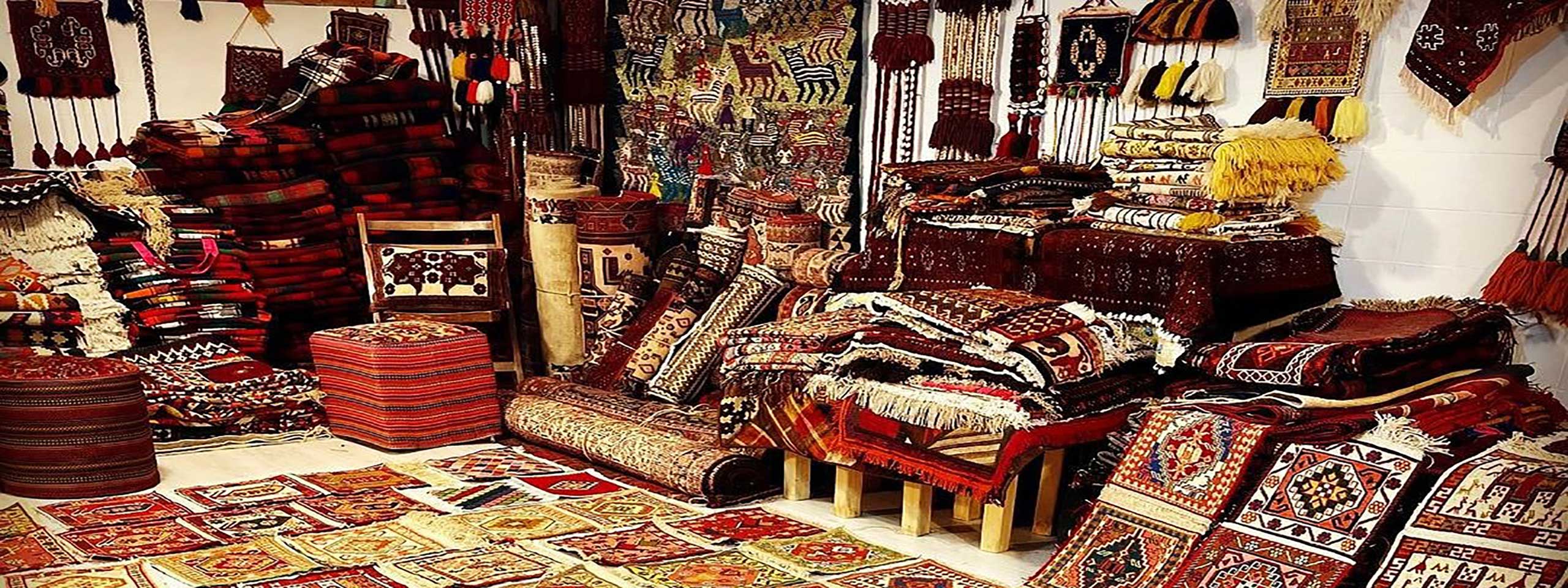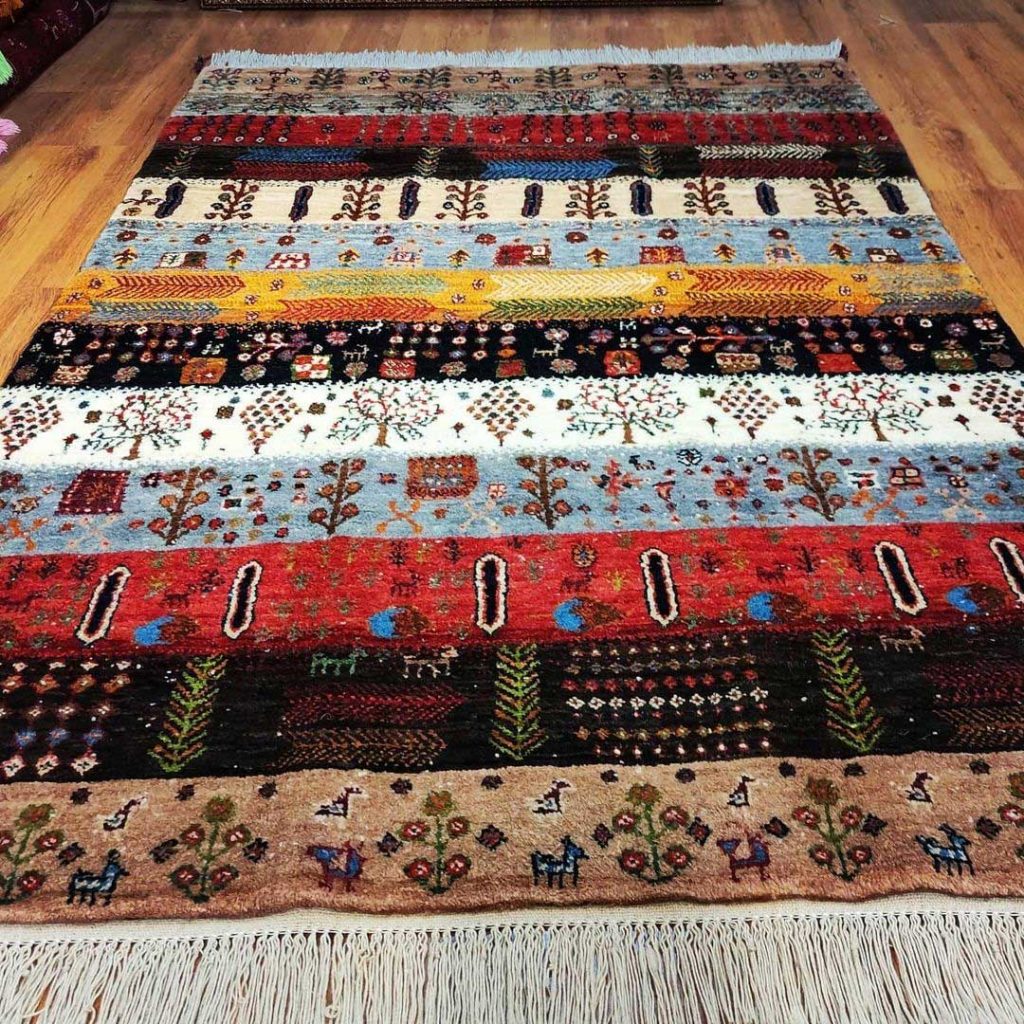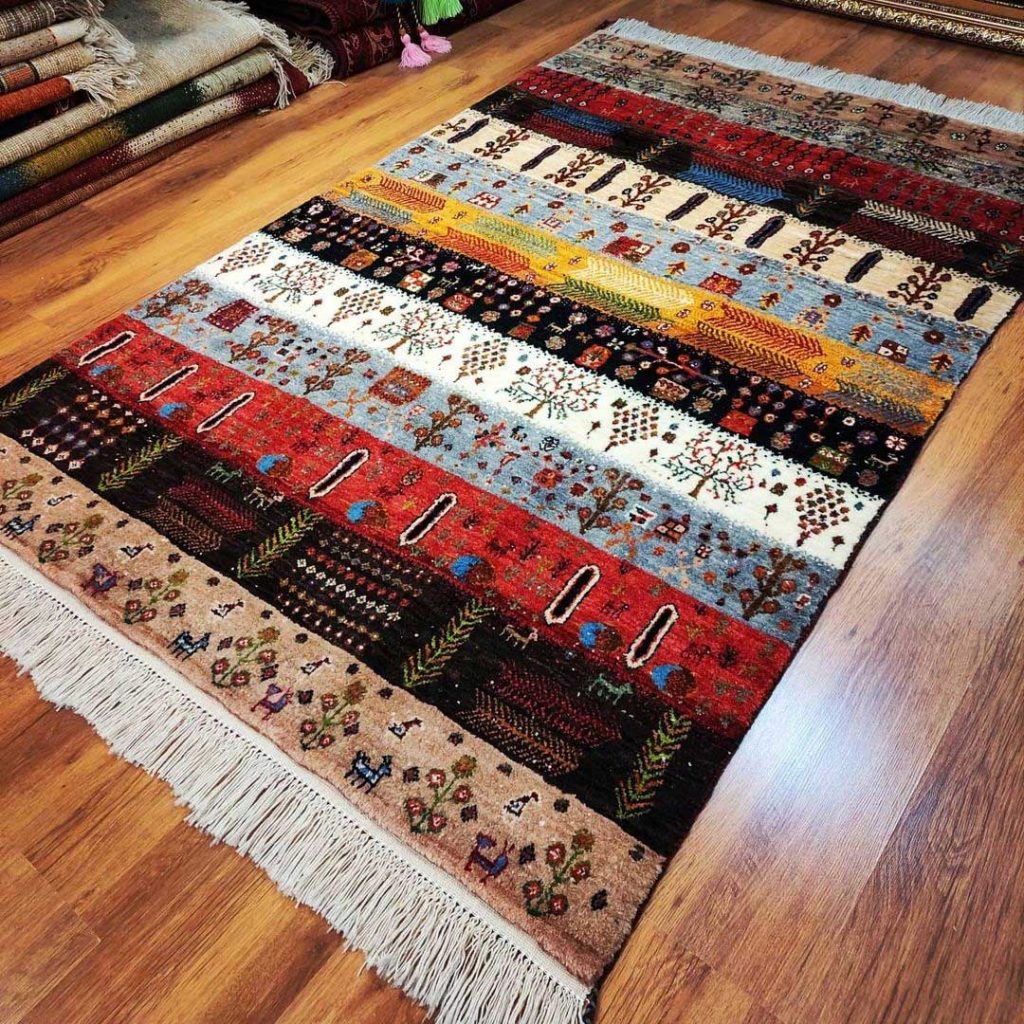Anything that can be spread on the ground is called a carpet. In Persian, carpet is equivalent to anything that can be spread on the floor. Carpets, mats, rugs, kilims, jajims and etc. are all types of Persian carpets.
Persian rug – The most famous Persian carpet
When it comes to Iranian culture and identity, the Persian rug is undoubtedly one of the prominent symbols that show this culture and identity. This Iranian art has also taken on a cultural function; So that the designs and patterns of each one not only represent a special historical period but also reveal symbols of the culture of its weavers who are from specific regions of Iran.
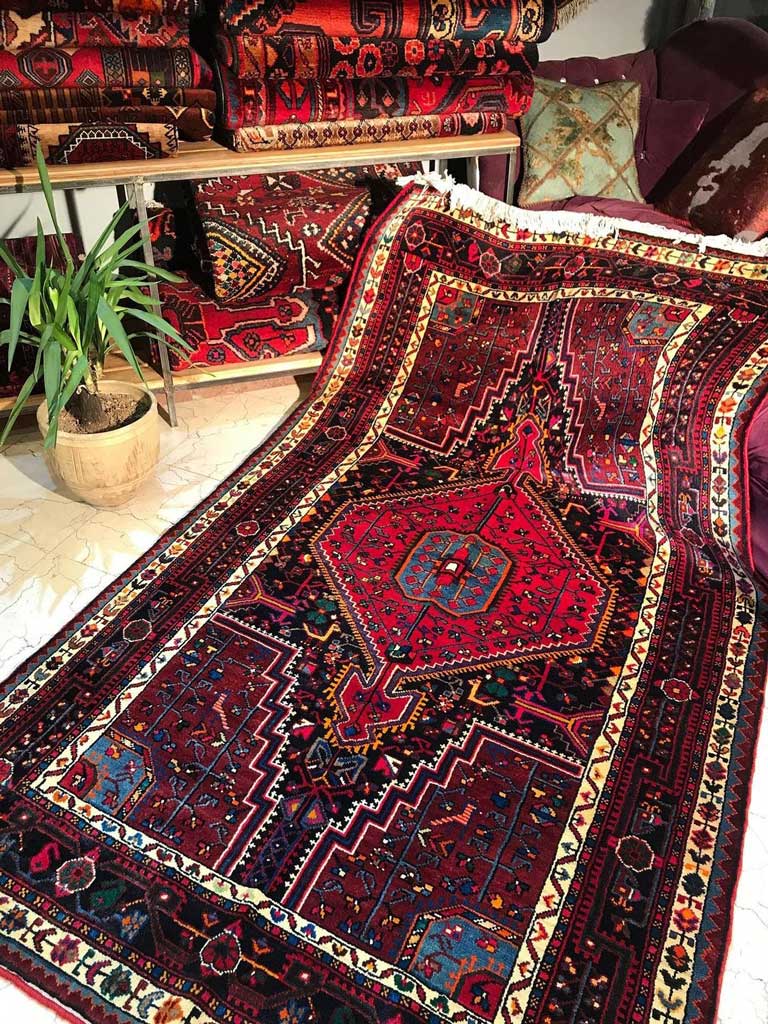
Although the date of the beginning of the rug weaving is not known and it is not clear from which region the weaving of the rug started, but most historians and archaeologists believe that the Iranians were among the first tribes to start weaving the rug. Evidence suggests that the carpet was created for purely practical purposes, such as protecting the villager’s houses from the cold and damp, and at least opened its way as an ornamental product and a sign of change in the houses of the nobility.
Historically, the Safavid period is a brilliant period of reviving the art of weaving in all fields. Valuable specimens in world-famous museums, such as the famous Ardabil carpet, which are kept in the Victoria and Albert Museum in London, are mostly the result of royal Persian carpet weaving workshops during this period. The support of the Safavid kings and their expression of interest in this industry caused the Persian carpet weaving industry to rise from a rural profession to one of the fine arts.
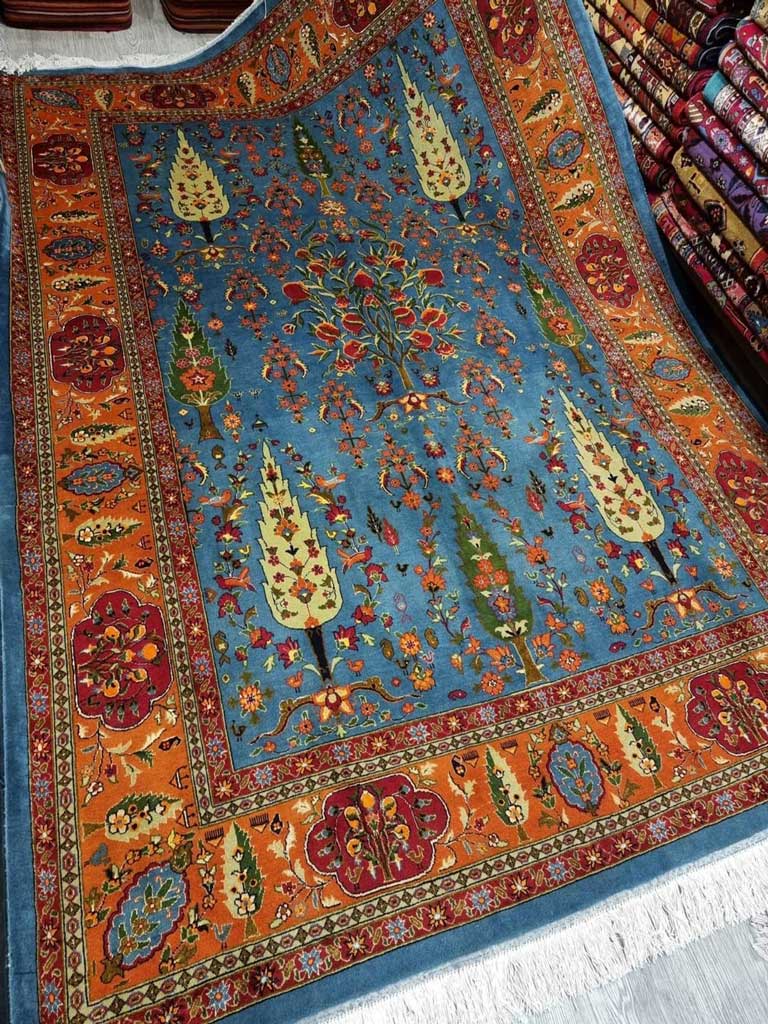
Persian rugs are divided into several categories based on material:
- All wool rugs
- Wool warp rugs
- All silk rugs
- Silk plain rugs
- Silk relief work rug
Handmade and machine-made Persian rugs
In general, rugs are designed for different uses depending on price, material, and size. The rugs themselves are divided into two categories: handmade and machine. Machine rugs are woven using technology and automatic machines. Naturally, the artistic effort and taste in these rugs are much less than handmade rugs.
Persian kilim or Gelim – Persian carpet for nomads
After being able to make a blanket out of animal skins, humans gradually began to think about using wool and skins for bedding. When man invented spinning wool, kilim weaving was created so that humans would no longer sit on the dry or cold ground. According to historical evidence, the history of this beautiful and valuable art dates back to 2500 BC; The oldest woven kilim from this period has been discovered among the works of ancient Egypt.
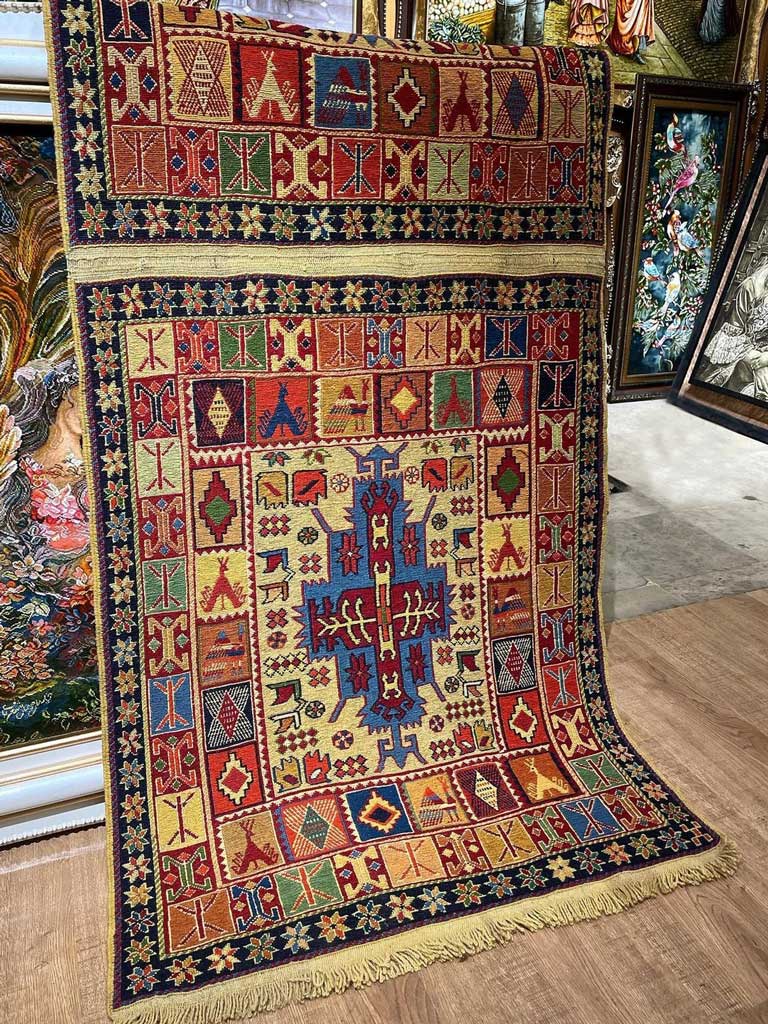
A kind of handmade Persian carpet whose texture is without feathers is called kilim; This product is usually made of natural wool and is sometimes interwoven from a mixture of wool and goat hair. Gelim weaving is a female art and is mostly seen in rural and nomadic areas of Iran.
The designs used in Persian kilims are generally geometric patterns that have different shapes, such as triangle, rhombus, hexagon, and rectangle. Of course, many original and traditional motifs adorn the face of Persian Kilim, which sometimes take the form of animals and nature, and sometimes cashmere, flowers, and plants. The different designs used in these arts depend on the type and area in which they are woven.
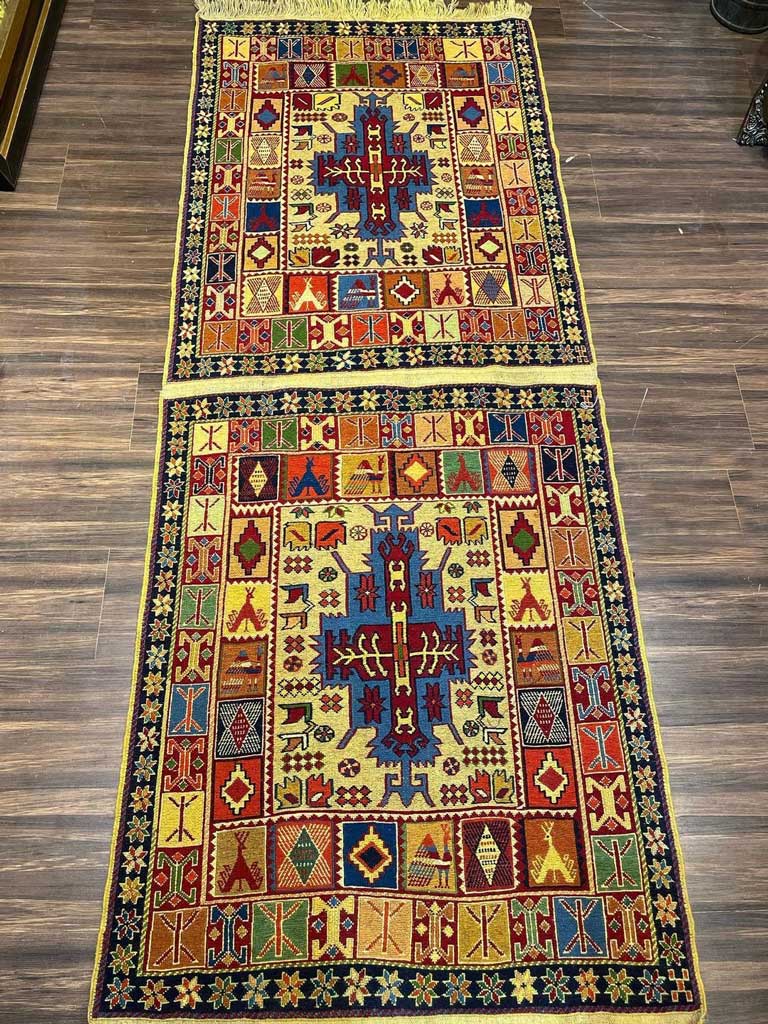
Ziloo – Persian carpet for desert residents
Ziloos is a type of hand-woven Persian carpet that is woven with cotton thread, which is suitable for desert areas due to the coolness of cotton and is very similar to kilim; With the difference that the kilim is woven from wool. Unlike carpets and kilims, Ziloo does not have a variety of designs and colors, which is why it is mostly used in religious places such as mosques and shrines, because one of the characteristics of religious places is simplicity.
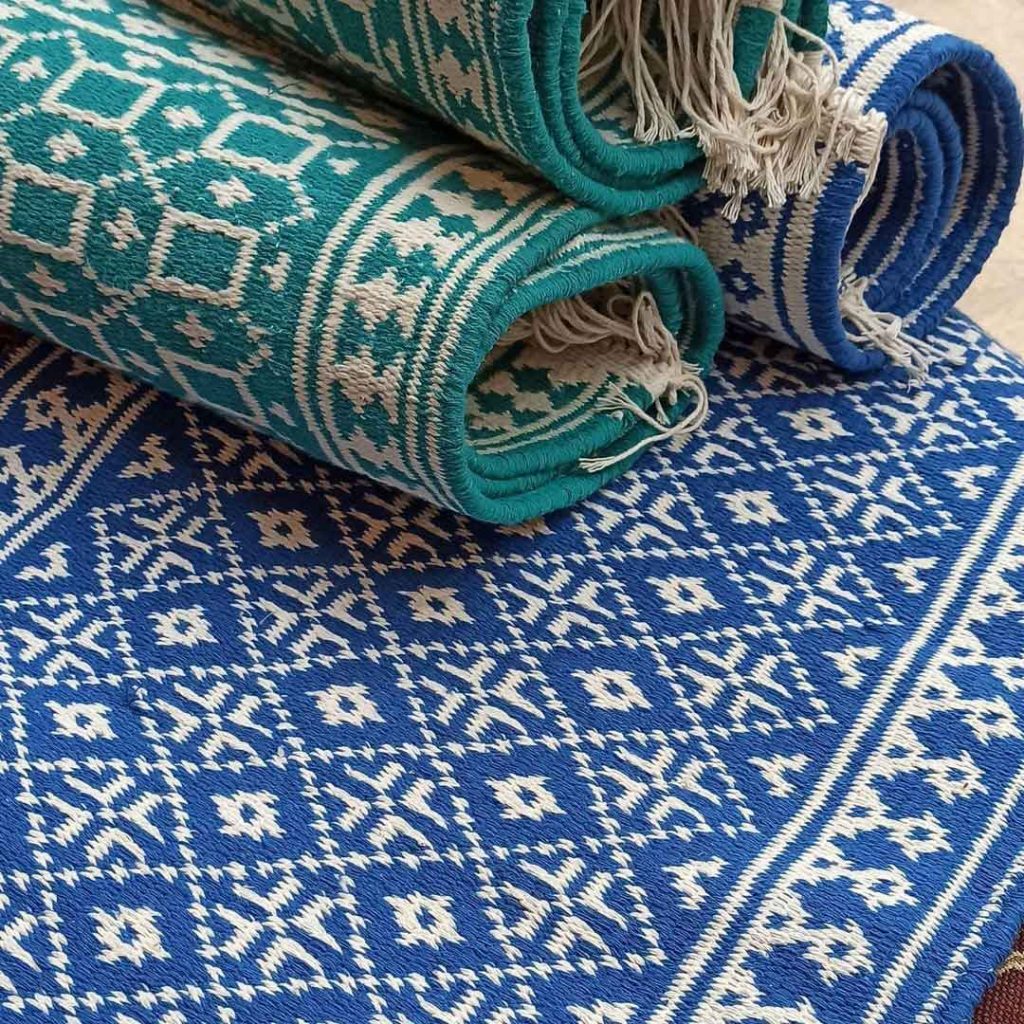
Ziloos are divided into three categories in terms of application and color:
- Zilloos that are woven with blue and white colors and are specific to mosques and holy places.
- Ink ziloos that are woven with blue and mud colors and used for household purposes. These ziloos are relatively inexpensive.
- Naphthal ziloos, which are woven with green and mud colors and are the best type of ziloos.
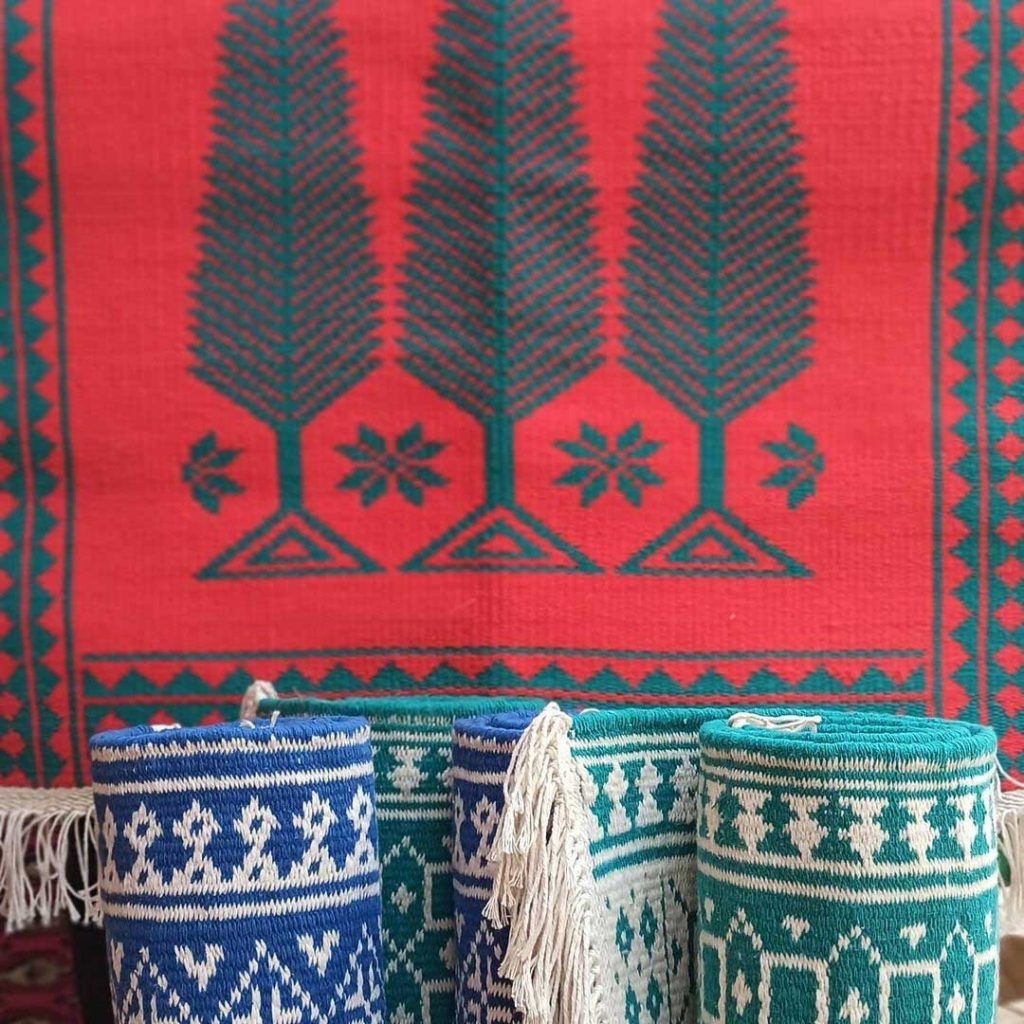
Gabbeh – A Persian carpet that is very similar to Persian rug
Gabbeh is very similar to Persian rug, except that Gabbeh is much thicker than it. The use of this Persian carpet is more common in cold regions and the reason is the protection from the cold.
One of the factors that have made Gabbehs can be found in different types of designs and patterns is the traditional and mental role-playing of its weavers, because there is no plan in the texture of this type of underlay, and every weaver has everything in mind. Therefore, it can be boldly said that if you put millions of Gabbehs together, it is still impossible to find two Gabbehs with exactly the same characteristics. This point is also one of the other valuable artistic characteristics of Gabbeh.
In ancient times, Gabbehs were all self-colored, meaning that the fleece used in their weaving was used without discoloration; These wools were often in the natural colors of black, white, and gray, which were used according to the weaver’s spirit. For example, if the weaver was in a good mood, he would use more white, and vice versa, he would use more black when he was upset. Over time, weavers using plant and natural dyes provided more colorful and varied Persian carpets.
Jajim – Persian versatile carpet
Jajim is a Persian carpet(double-sided) that has various uses. Nomads use it as a blanket, and some people use it to pack things, for example, in the western and northwestern regions of the country, Jajim is used to collect and pack bedding. The raw material of Jajim is wool and its texture is similar to kilim.
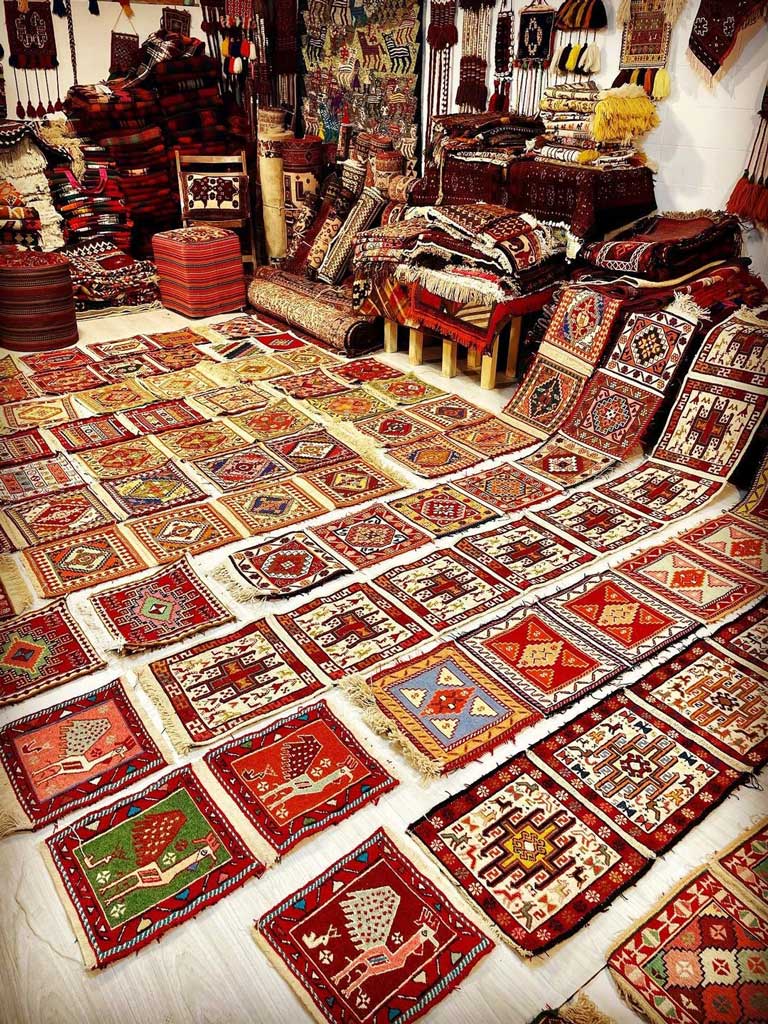
Persian wicker mat – The oldest Persian carpet
One of the oldest man-made products is the mat. According to the course of human life, after the end of the cave-dwelling period, they lived as nomads until humans settled down. One of the necessities of nomadic human life is the ability to be transported as well as the easy erection of their habitat, and the mat has these characteristics. In fact, after the caves, the first shelters were built with the help of mats.
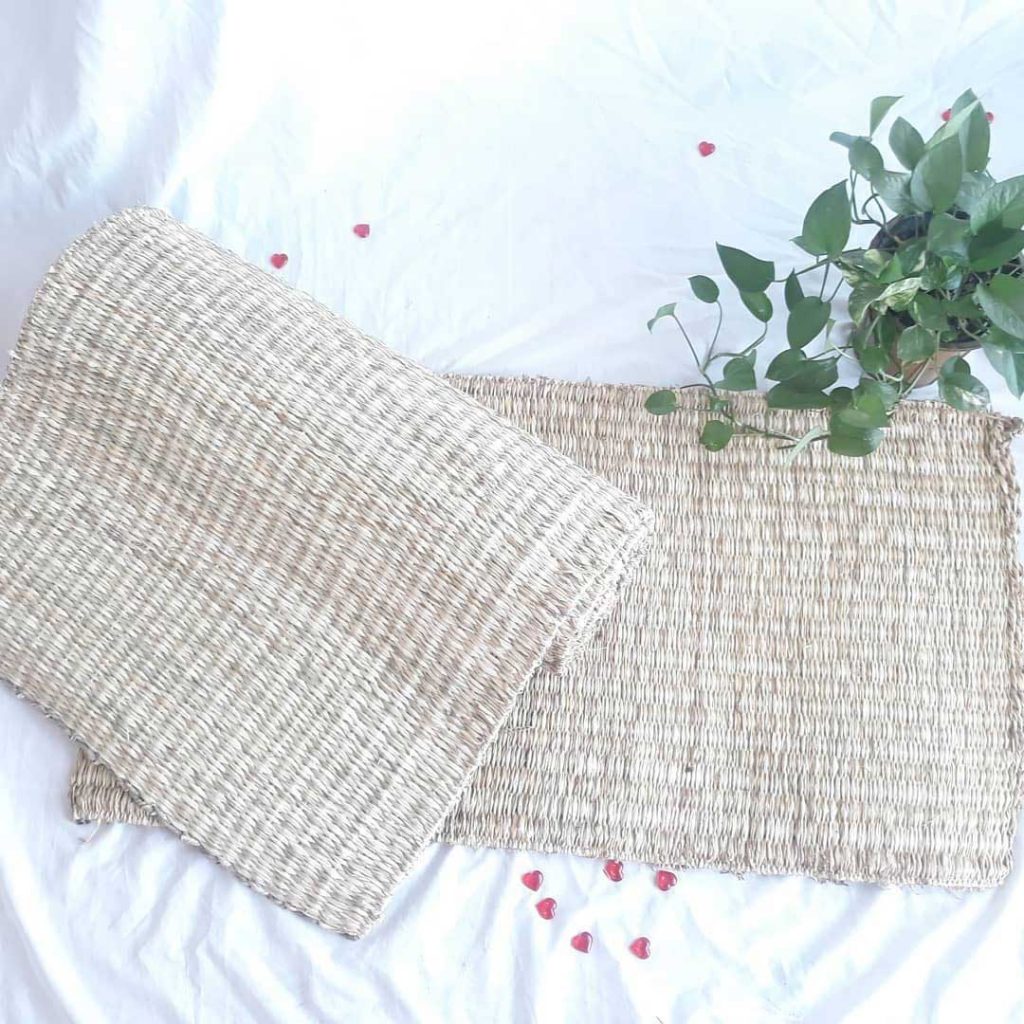
Iran is one of the sixteen countries that produce mats, along with countries such as Japan, Korea, and Mexico. The historical background of these products in Iran shows that the use of mats by the ancient Iranians was not limited to wicker mat and they also used mats in making dishes.
Making wicker products, including wicker mat, is very common in the southern and northern regions of Iran.
Persian felt mats
Namad(Persian called) or Felting is a traditional weaving of Persian carpet that is produced with wool. To prepare a felt mat, weaving is not done, but by creating pressure, moisture and heat, they cause the wool fibers to fall apart. The amount of wool required per square meter of the felt mat is equal to the amount of wool needed to produce a Persian rug, but because the time to produce the felt mat is much shorter(about a day), it’s cheaper than a Persian rug.
